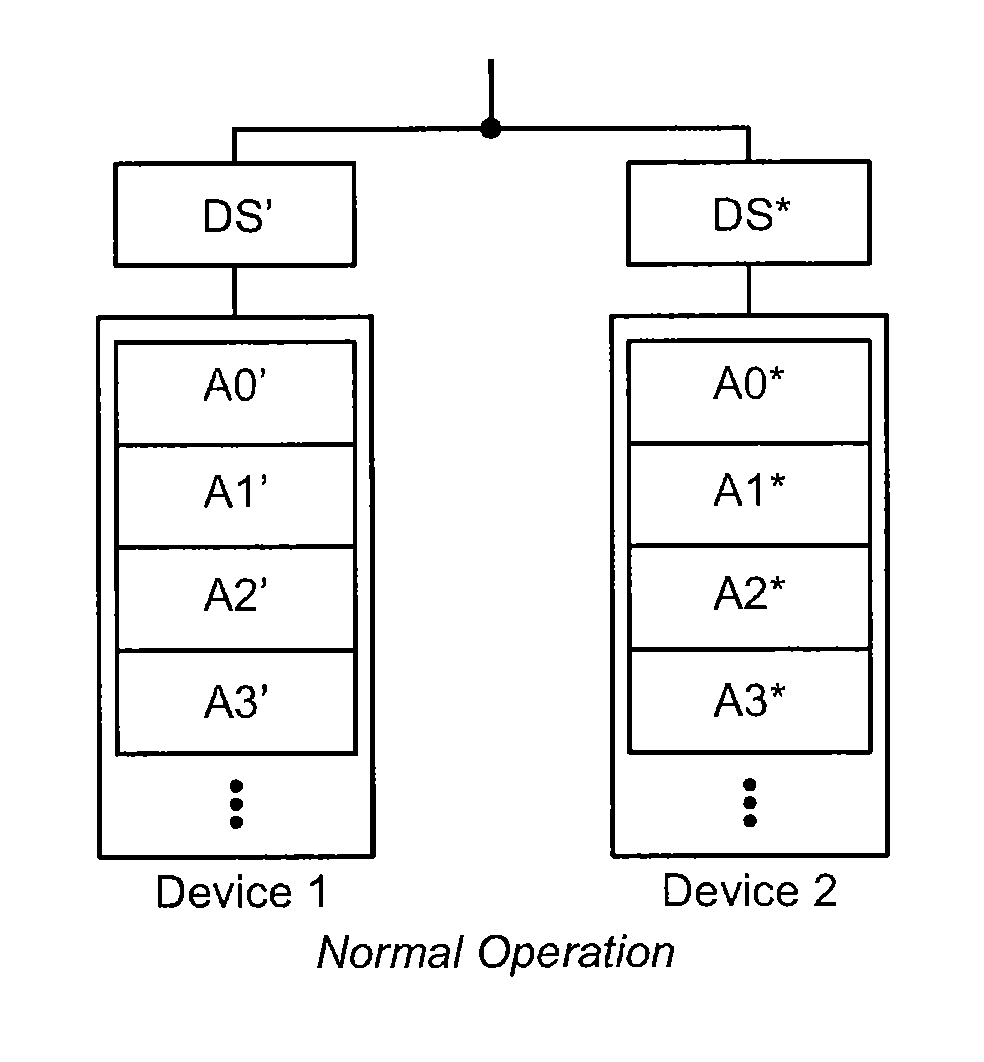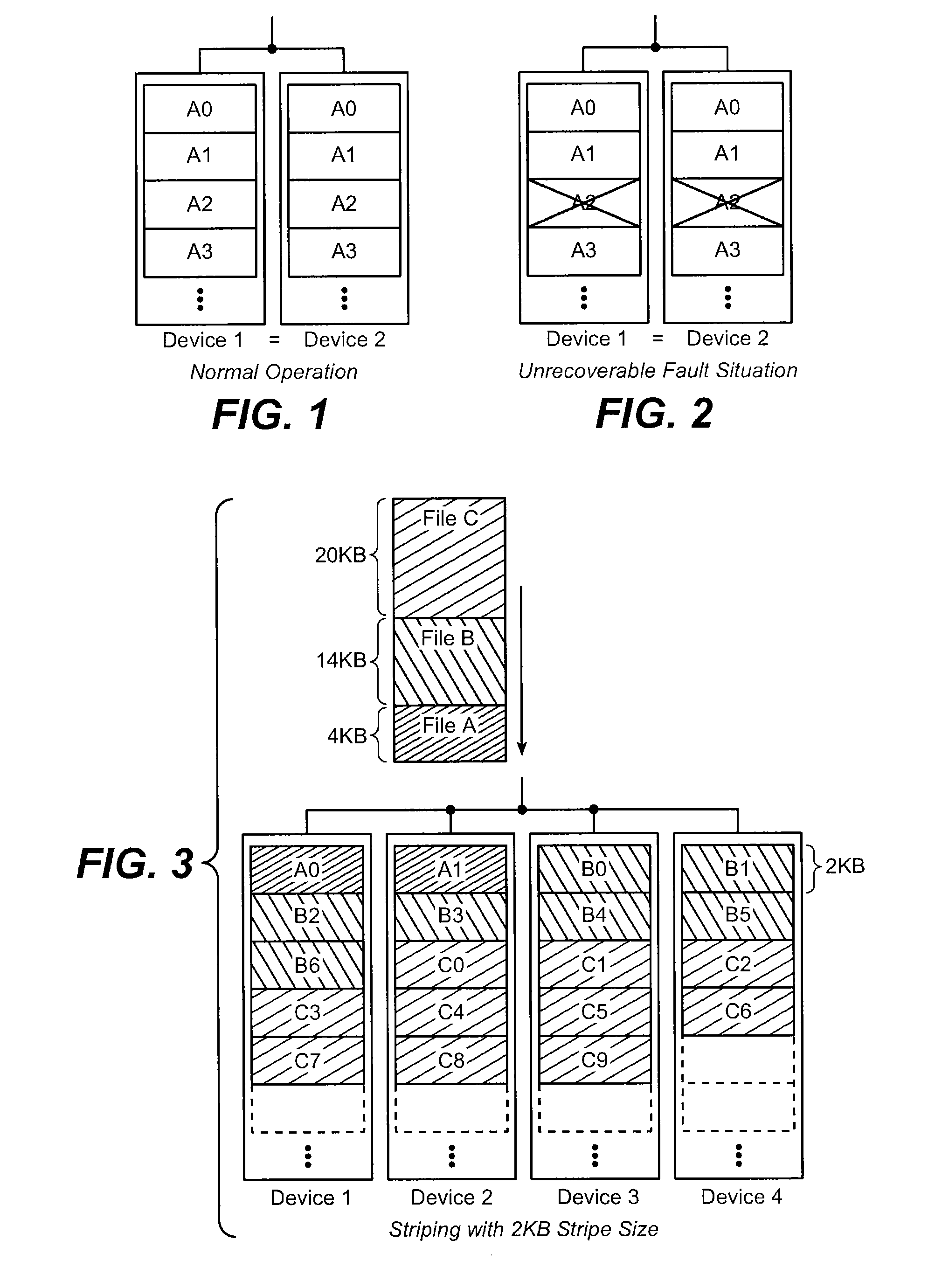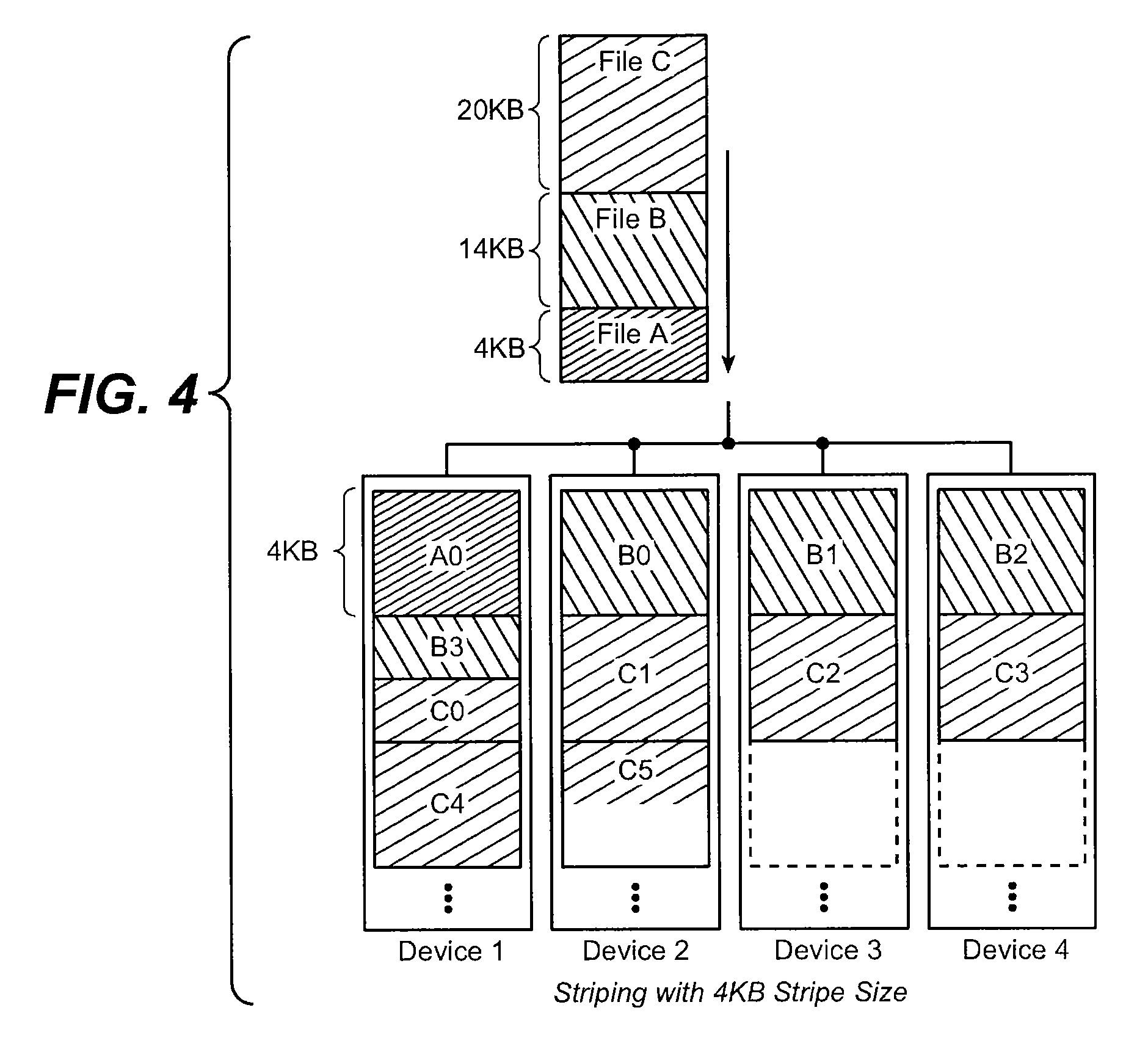Nonvolatile memory with self recovery
a non-volatile memory and self-recovery technology, applied in the field of non-volatile memory, to achieve the effect of high reliability in non-volatile memory arrays
- Summary
- Abstract
- Description
- Claims
- Application Information
AI Technical Summary
Benefits of technology
Problems solved by technology
Method used
Image
Examples
Embodiment Construction
[0031]Various methods are used to achieve high reliability data storage in nonvolatile memory systems. Certain methods that improve reliability through redundancy use a Redundant Array of Independent Disks (RAID). There are different types of RAID systems that use mirroring, striping, and parity data, or some combination of these techniques. Although the term RAID is generally associated with Hard Disk Drives (HDDs), RAID techniques may be used with other types of memory including nonvolatile memory arrays such as flash memory.
[0032]FIG. 1 shows two devices, device 1 and device 2, which are connected in a mirroring arrangement (also referred to as RAID 1). Mirroring means that the same data that is stored in device 1, A0, A1, A2, A3, is also stored in device 2 so that there is a redundant copy of each unit of data in device 2. In other examples, more than two devices may be connected in this way to provide more than two copies of the same data. Generally, maintaining a separate copy...
PUM
 Login to View More
Login to View More Abstract
Description
Claims
Application Information
 Login to View More
Login to View More - R&D
- Intellectual Property
- Life Sciences
- Materials
- Tech Scout
- Unparalleled Data Quality
- Higher Quality Content
- 60% Fewer Hallucinations
Browse by: Latest US Patents, China's latest patents, Technical Efficacy Thesaurus, Application Domain, Technology Topic, Popular Technical Reports.
© 2025 PatSnap. All rights reserved.Legal|Privacy policy|Modern Slavery Act Transparency Statement|Sitemap|About US| Contact US: help@patsnap.com



